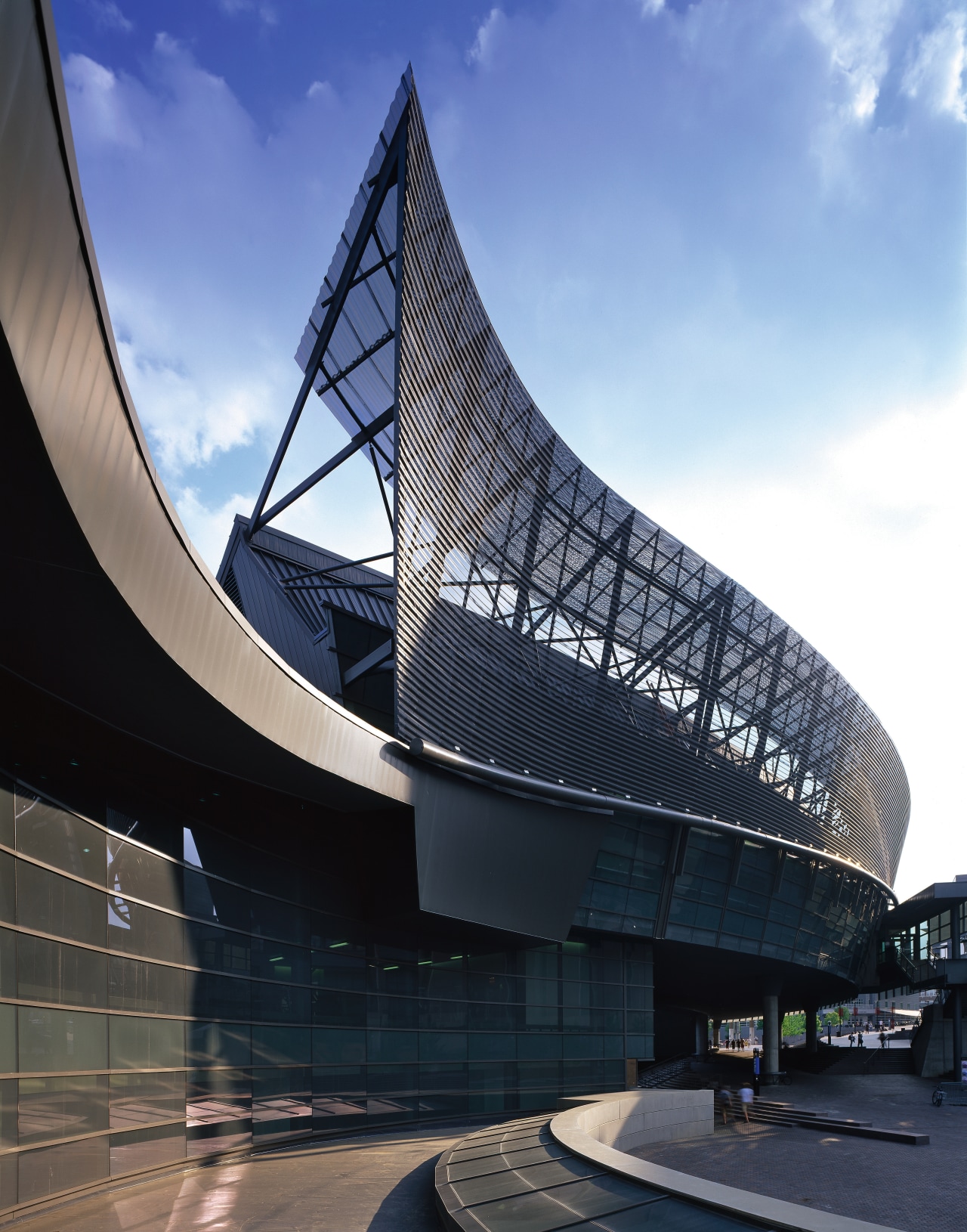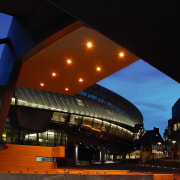Connective tissue
The final piece in a redevelopment with a two billion dollar price tag, the Campus Recreation Center at the University of Cincinnati is the cohesive glue that brings all disparate parts together
As far as transformations go, there is little to match the architectural metamorphosis undertaken in recent years by the University of Cincinnati. With the last piece in its master plan this Thom Mayne-designed 32,515m² recreation centre recently completed, what was originally a mainly concrete campus that seemed to favour pavement over grass has been developed into a pedestrian-friendly showpiece of contemporary architecture.
In 1989, the University of Cincinnati devised a master plan to redevelop its grounds. Overseen by landscape architect George Hargreaves, the campus is now a dynamic series of green, open spaces with an array of buildings that have been designed by a veritable who's who of contemporary architecture.
Mayne, last year's Pritzker Prize winner and principal at multi-disciplinary Californian firm Morphosis, is the latest name on roll-call already populated by such notable architects as Frank Gehry, Peter Eisenman, Michael Graves, Henry Cobb, Charles Gwathmey, Buzz Yudell and David Childes.
Assisting Mayne on the US$113m project were a 26-strong team from Morphosis, as well as members of the Cincinnati firm KZF Design who also collaborated on the design.
Despite falling under the single umbrella description of recreation centre, Mayne says the structure is actually multiple buildings. The facility includes student housing, classrooms, a gymnasium, aquatic centre, campus store and dining hall.
"The building is a connective tissue that fulfills the strategy of the master plan by establishing flow and resolving the site's disparate staccato of existing buildings and edges," says Mayne.
"The area was interesting. It wasn't a site in the conventional sense, and this is also not a building in the conventional sense. Rather it's five buildings. If you take apart the elements, you can see it's a collaboration of an urban idea. Everything in the design is an interpretation of the connective tissue. In a sense, it's the opposite of object building. There's no preferred view."
From an elevated position, the complexities of the structure's roofscape can be viewed. Tenuously similar in shape to a grand piano, the roof is supported by seven large trusses, each unique in size and shape.
At its western end, the recreation centre abuts Nippert Stadium one of the oldest college football stadiums in use today before creating movement by continuing and incorporating the sweeping line of the stadium roof into its own geometry. At the eastern end, the housing wing's angularity completely contrasts with the curves found in other areas.
"The forms of the building represent the found conditions and contribute to a strategy for cohesively incorporating numerous existing structures with the additional 35,515m2 of recreational facilities," says Mayne.
Originally, the facility was to be of a much smaller scale, but as changes were made to surrounding buildings, the recreation centre grew in scale. A solution to the shortage of student accommodation and classroom space was found in this new project. Housing in the recreation centre consists of 112 suites, each containing two single bedrooms. These added uses saw the inclusion of a 160-seat restaurant, The Marche, as well as a juice bar and 400-seat dining facility.
Throughout the building's interior, 35 seemingly randomly placed, circular skylights allow sunlight to stream in. The ceiling, up to 20m high in places, is supported by seven trusses of between 30m and 137m long. Aluminium clad, these create an interior with complicated and varied ceiling heights.
"Everything is about transparency," says Mayne. "It's about the social interconnectivity of this very cosmopolitan space in the middle of the campus."
Emphasising this transparency, the design includes glass walls that provide clear sightlines through the interior, often from above and below. From the gymnasium, it's possible to view Nippert Stadium and the Olympic pool. A four lane suspended jogging track traverses the area above the basketball arena, while from the restaurant there are views of the football field.
Despite its mass, and because of its intricate relationship with the site, the recreation centre enhances the flow of foot traffic throughout the campus.
"Conceiving the main circulation corridor as a series of weaving strands, we placed Main Street, the primary campus thoroughfare, in such a way as to concentrate and direct the movement of students," says Mayne. "The contoured element of the housing building funnels students into the campus green, while secondary paths penetrate, intertwine, and wrap the university buildings."
Story by: Trendsideas
Home kitchen bathroom commercial design
Diving into nature
Classic looks, contemporary efficiency
Personality plus











